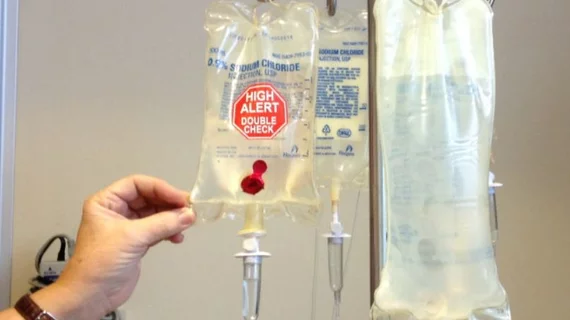As life expectancy continues to expand for cancer patients, clinicians are increasingly dealing with oncological complications like cardiotoxicity, according to a medical team in the Netherlands—and those doctors are met with a paucity of research on the topic.
When cancer and cardiology intersect, patients are faced with a unique challenge, first study author Marijke Linschoten, BSc, and colleagues wrote in Circulation: Genomic and Precision Medicine. Chemotherapy is commonly recommended and a reasonable option for many patients, but radiation can, as past research shows, result in long-term heart damage.
“Cancer treatment can cause a wide range of heart problems,” the American Cancer Society (ACS) wrote in the 2016-17 booklet Cancer Treatment & Survivorship: Facts & Figures. “A number of chemotherapy drugs, particularly anthracyclines, can cause heart damage, which may increase risk of heart failure over time.”
This risk increases proportionately to the amount of radiation a patient receives, the ACS wrote, and can persist for longer than 20 years. And though risk and severity might be manageable through living a heart-healthy lifestyle, Linschoten et al. wrote anthracycline-induced cardiotoxicity (AIC) is both dose-related and irreversible.
“The prognosis is strikingly poor” for patients dealing with AIC, they wrote—the condition’s incidence is up to 18 percent, with a 60 percent mortality rate at two years in symptomatic heart failure patients. Type II cardiotoxicity, or trastuzumab-associated cardiotoxicity, is most prevalent in women with HER2-positive breast cancer and can often be reversed. Still, type II’s cardiotoxicity incidence remains between 7.1 percent and 18.6 percent for patients.
There’s no doubt that risk assessment in patients vulnerable to cardiotoxicity is difficult, Linschoten and co-authors wrote, but adding genetic variants to the current formula could be helpful.
“Genetic markers with the potential to predict whether a patient will develop CTRCD can allow for the identification of patients who will benefit from careful monitoring, prescription of cardioprotective drugs and enable early treatment initiation once CTRCD has developed,” they wrote.
The team completed a systematic literature search of the PubMed and Embase databases in an effort to identify any prior studies that had linked genetics to cardiotoxicity. Forty studies made the mark, with 34 exploring genetic risk factors for AIC and the remaining 6 dealing with trastuzumab-associated cardiotoxicity.
Twenty-five genetic variants in 20 genes, as well as two intergenic variants, were identified throughout the course of the review, according to the study. Single nucleotide polymorphisms with the strongest evidence for cardiotoxicity indication included CELF4 rs1786814, RARG rs2229774, SLC28A3 rs7853758, UGT1A6 rs17863783 and rs28714259.
“Existing evidence supports the hypothesis that genetic variation contributes to chemotherapy-related cardiac dysfunction,” Linschoten and colleagues wrote. “Although many variants identified by this systematic review show potential to improve risk stratification, future studies are necessary for validation and assessment of their value in a diagnostic and prognostic setting.”
Related Cancer Therapy Cardiotoxicity Content:
Succeeding with Cancer: Using Imaging to Avoid Treatment-induced Heart Failure
Providers must rethink traditional imaging approaches to prevent cardiotoxicity in cancer patients
CV programs struggling to keep up with growing demand for cardio-oncologists
Machine learning predicts drug cardiotoxicity
Prior cardiotoxicity linked to 30% increased risk of CHF during pregnancy
CV outcomes underreported in pivotal anticancer trials
CDK2 inhibitors protect cancer patients from anthracycline-induced cardiotoxicity
Genetic variants could be key to identifying chemo-induced cardiotoxicity
T2 mapping may uncover cardiotoxic marker early enough to prevent heart failure
Some chemo drugs might be more heart-safe than others
Cardiac MRI-derived T2 mapping may help heart failure patients
Study calls for better collaboration between cardiologists, oncologists
Cardiac monitoring may protect high-risk breast cancer patients against heart failure

